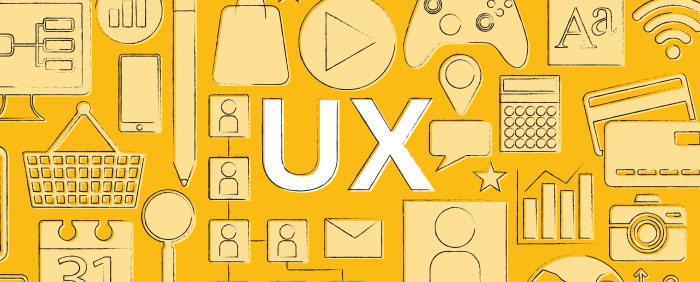Andrew Wynne from Ignite Exponential explores the worlds of UX and UI
You often hear UX and UI used together but they are different and important professions that can make the difference between success and failure for physical and digital products. The two disciplines – although intrinsically linked – require very different problem-solving mindsets and skills to achieve good results.
UI or User Interface is mainly concerned with aspects of design interaction, physical layout and visual design. UX or User experience is a term used to describe the overall experience a user has when interacting with a product or service. Some of the key areas covered by UX are user research, personas and usability testing.
So why is UX important? Where your product sits on the user experience scale from delightful to downright frustrating, will determine how well it is received how well it will last the tests of time and use.
UX isn’t limited to digital products such as websites and apps. It can be anything from the packaging of a toothbrush to the wheels of an orthopaedic chair. And the impact of good and bad UX is everywhere.
The term UX was first coined in the 1990s by Doctor Donald Norman, an electrical engineer and cognitive scientist at Apple. Norman emphasised the importance of designing based on the needs and goals of the end-user and introduced the term ‘user experience’. He described it as encompassing, “All aspects of a person’s experience with a system, from the materials used to the interaction itself (both physical or digital), along with the interface, graphics, and orientation.”
UX in practice
The UX process can be divided up into five main groups: research, design, prototyping, testing and measurement. Based on these phases, UX designers tend to follow a certain sequence for each project: carrying out user research, analysing their findings, defining user personas, mapping out user flows, creating wireframes and prototypes, conducting user testing, and finally, handing the designs over to an industrial or graphic designer.
A user-centred approach is crucial; you need to understand what your users need, how they think, and how they behave.
A good place to start is with competitor research to see what’s out there, before moving on to interviews with actual prospective users. Research helps you understand the problem you’re trying to solve, identify pain-points and challenges, validate your assumptions, find patterns and commonalities across your target user groups and shed light on your users’ needs and objectives.
User personas – based on goals, needs, and behaviours – are extremely valuable in the UX design process as it reminds us that we are designing for real people. They also stop decisions from being made based on personal preference. User flows can help to map out key product related situations, highlighting and identifying how users will react and feel.
In the design phase, developers begin to structure their content and consider the ‘customer journey’. It’s common to use ‘information architecture’, the process of structuring, labelling and organising content using wireframing to show how the product will function and how the user will operate it.
Moving on to Prototyping
Aspects of the prototyping stage may include:
- Experimenting with designs
- Repairing inconsistencies and errors
- Developing data and using it to improve upon original ideas
- Demonstrating products to management
- Checking to see that products are functional and usable
Using the prototype, testing will uncover problems, help discover opportunities and learn about users. In UX, tests can be as simple as observing customer or product interactions or as complex as presenting different versions of a product to the public to see which is better received.
Testing is a fundamental part of the UX designer’s job and it’s important to test your designs on real users. The most common type of testing for UX designers is usability testing, which is a technique used to evaluate how intuitive and user-friendly a particular design is. After several iterations of prototyping and testing, the design is ready for a visual makeover. This is where the ID and UI designer comes in.
The end?
Just because a product officially launches doesn’t mean the UX work is over. UX is an ongoing process that continues for as long as products are in use. Ultimately, the true goal of UX is to allow businesses to make products that are useful and pleasurable for customers to purchase. When done right, UX is one of the most valuable assets a company can offer. Just make sure you consider all users and understand their wants and needs!

